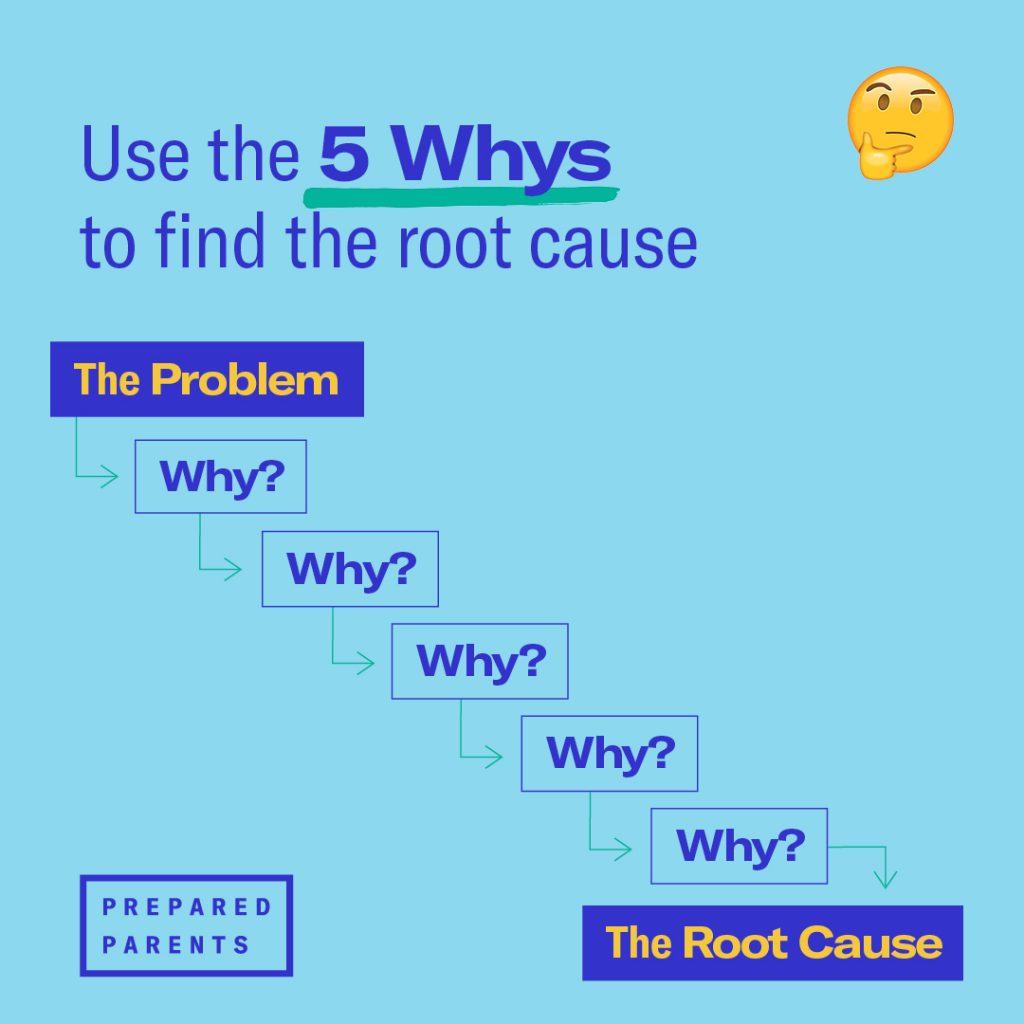We can’t always anticipate how a kid will react in any given situation. Do they burst into tears or yell and scream if we ask them to take out the trash or fold the laundry? What’s going on? This unexpected emotional response is probably not directly related to our request. There’s something else going on. To find out what, ask why.
Why? Because their response to this question will highlight cause-and-effect. Asking why helps us get to the root cause of a problem.

Applying the 5 Whys can help us find the source of our kids emotional response when it doesn’t match a situation. In turn, when we give our kids the opportunity to dig deeper, we are helping them to build a habit around self-awareness, understanding how they feel, think and impact others.
Pioneered by car manufacturer Toyota in the 1950s, the Five Whys technique is widely taught in business schools and teacher training programs because it’s a way to find the root cause of a problem. With each why you’re digging deeper and will ultimately find the underlying source.
The 5 Whys strategy is used in the classroom to push a kid to think deeply and challenge themselves. This inquiry-based learning technique gets a kid to research and share insights in response to their questions.
To get started:
- Ask the first why to identify the problem.
- Continue to ask why to learn more.
- Use the responses to develop a solution to the root cause.
Identify the problem: Jake angrily threw his laundry on the floor.
- “Jake, why did you throw the laundry on the floor?”
“Because I didn’t know where else to put it.” - ”Why didn’t you know where else to put it?”
“Because this room is a mess.” - ”Why is the room a mess?”
”Because I don’t have time to clean it.” - “Why don’t you have time?”
“Because I spend all my time doing math homework.” - Why does the math homework take so much time?”
“Because I don’t understand the subject.”
Develop a solution for the root cause:
The root cause is sometimes so far removed from the original problem that it requires solving in two places: for the root cause and the original problem. In this case, the problem really was not about finding a place to put the laundry. The root was the fact that Jake did not understand the math he was learning and the frustration he felt. By drilling down to this, he could develop a strategy not only to deal with his frustration, but also to learn the concepts he was struggling with. And as a parent, our sixth question can start with how we work through this together.
It may feel tedious to keep asking why over and over again, but just as Toyota proved in the corporate world, with each why you’re getting deeper into the reasons behind the behavior. So, just keep asking.
New York Times reporter and best-selling business author Charles Duhigg shared insights on how he and his wife used the Five Whys to diagnose a family issue: failing to eat dinner together every night. It turns out, after asking why five times, they realized their bumpy morning routine with the kids was the root cause of why they weren’t eating dinner together. Getting out the door too late meant they missed valuable morning time before morning meetings, causing them to stay late every night, resulting in deprioritized family time.

